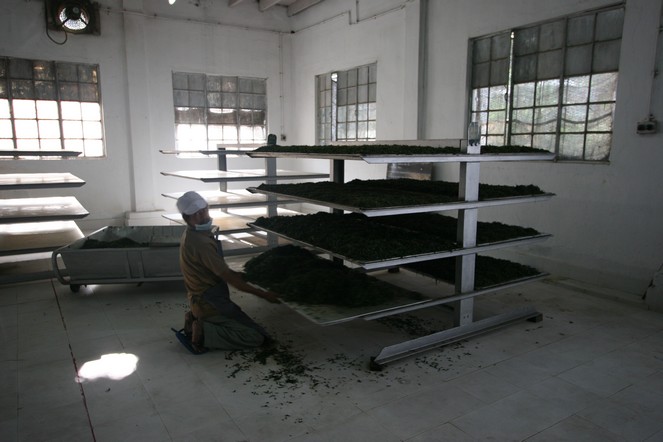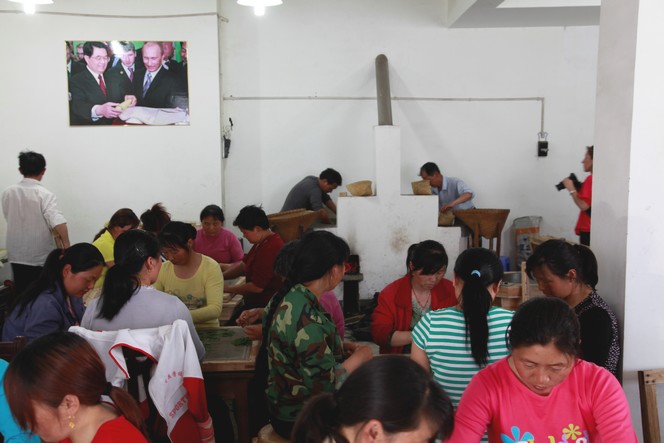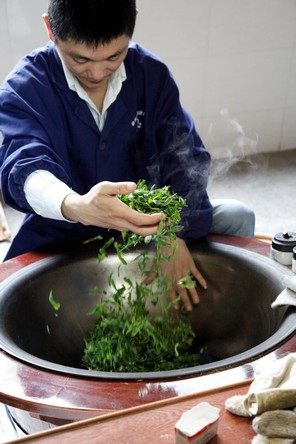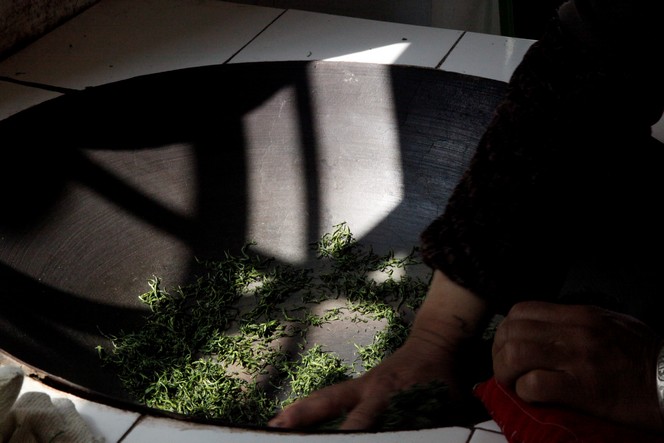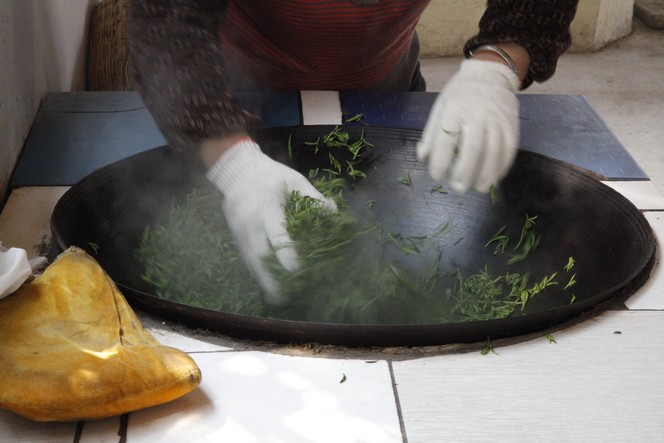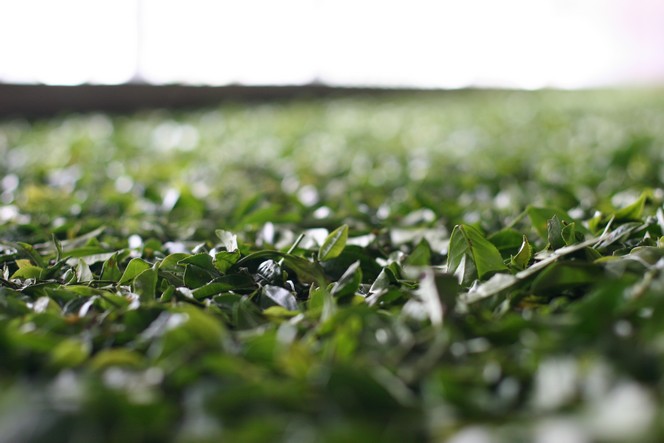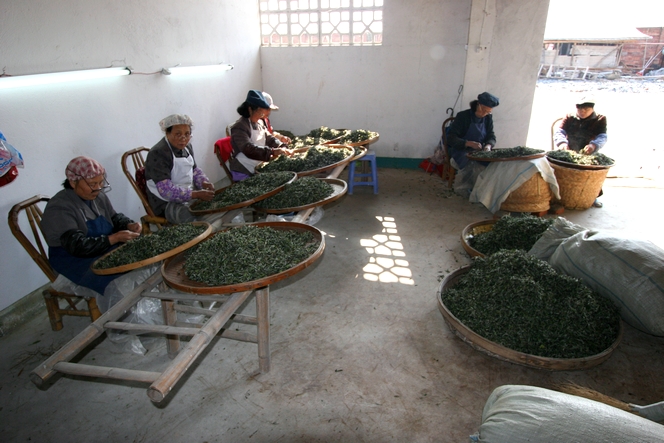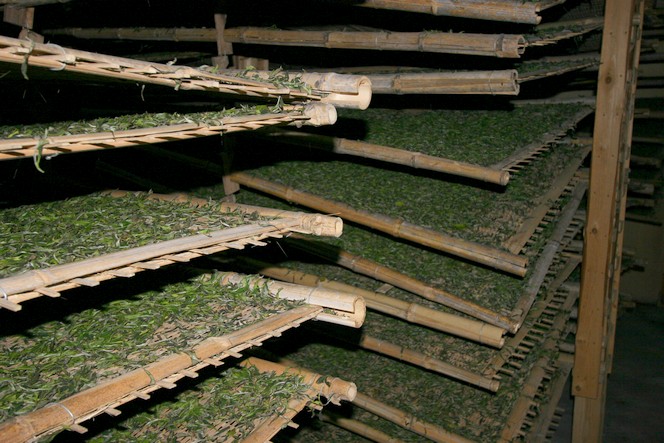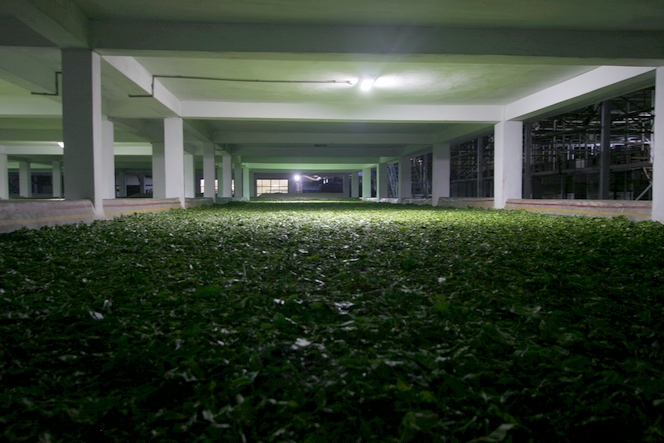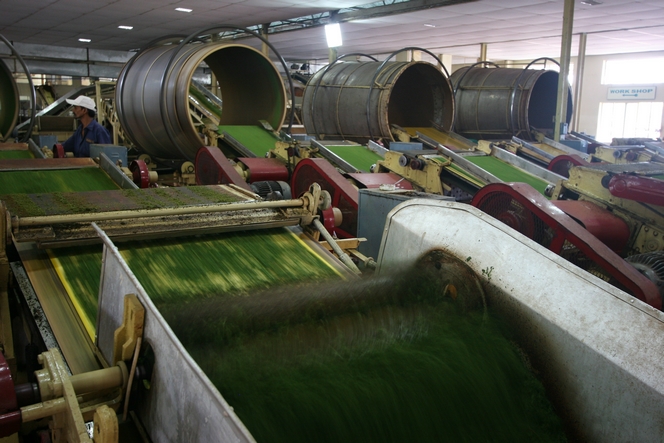Oxidation is an important stage in the process of making black tea.
It is not very easy to photograph as it consists of spreading out the tea on sheets in a fairly warm and humid atmosphere, then simply waiting for time to pass.
Tea processing
The best Taiping Hou Kui is produced here
Taiping Hou Kui is known as a precious tea among the Chinese, but very few have had the opportunity of tasting it even once in their life.
Here, we are in Hou Kui, in the famous “Village of the Monkeys”, the birthplace of this tea and its most well-known production site. In the main factory of the village, employees work beneath the gaze of the Russian president, who is very fond of this fine Chinese tea and received some as a gift from Hu Jintao. The tea given by the Chinese president to his Russian counterpart was made in this very factory, so you can imagine the pride of all the workers.
If, like Vladimir Putin, you like Taiping Hou Kui, then this is the time to make the most of it. The 2012 plucking is now available.
How to make Long Jing
Long Jing is processed in a large wok. The work requires plenty of dexterity as the tea must be kept moving at all times. The leaves are withered, rolled and dried in a continuous process and in the same recipient, simply by varying the hand movement.
In the cup you will find a note of roast chestnut, which comes from this toasting of the leaves.
Processing tea leaves in China
Here, near Hangzhou (China), the tea leaves are being processed on the scorching sides of the wok. The leaves are heated before being shaped as required, then dried. They must be processed quickly and precisely, which is why many farmers prefer to work with their bare hands.
My niece Aurélie launched Le Palais des Thés US
Twenty-five years ago I created Le Palais des Thés to turn my passion into a job, and to share with other enthusiasts the pleasures of tasting the world’s best teas. Since she was little, my niece Aurélie has always seen me with a cup of tea in my hand and has listened to my stories of distant travels to the plantations of China and Japan. A year ago, Aurélie, who has grown up to be a great connoisseur of tea herself, decided to start an exciting new venture and a fantastic challenge. Accompanied by Cy, her husband, she has decided to move to the United States and write a new chapter in this family story, by launching Le Palais des Thés in North America.
I am hugely proud of my niece and I know she will succeed – I have seen how passionate she and her husband are. They have a pioneering spirit.
Withering fills the leaves with a wonderful fragrance
The withering of tea leaves can take several tens of hours, during which time the leaves will lose some of their water content. In order to avoid the risk of oxidisation, hot or cold air is sometimes blown beneath the leaves. At this point, the air is filled with a wonderful fragrance, very typical and very floral, which can be detected for hundreds of metres around. I never grow tired of this smell. I find it captivating.
Selecting the best tea requires patience
In China as well as in India, when it comes to making high quality tea, no effort is spared in ensuring that only the best leaves are selected. Here, in Fuding (China), these workers are checking all the leaves of the Bai Mu Dan that has just been produced, one by one. It is a painstaking task that requires a great deal of patience. Only when this stage is finished can the leaves be packed into chests and shipped to the buyer.
The delicate art of withering white tea leaves
In the past, the withering of tea leaves took place in the open air, but nowadays it increasingly happens in a heated, well ventilated room. This system offers greater control over the ambient conditions. Here, in Fujian (China), the temperature and humidity levels are carefully regulated, and the room benefits from a sophisticated ventilation system. Which means the leaves of this Bai Mu Dan can gradually lose their water content.
Tea leaves spread out as far as the eye can see
In Assam, anything related to tea processing takes place on a massive scale, because of the incredible yield they get here: four times higher than in Darjeeling. The plantations themselves cover a much larger area than elsewhere in the country.
Take the withering, for example. Instead of troughs 10 to 15 metres wide, which I am used to seeing in other parts of India, here the leaves are spread out as far as the eye can see. I took this photo at night, and the dim light adds to the mystery of this essential stage in tea processing. During the withering, the leaf will lose much of its water content (up to 40% for Assams; up to 70% for Darjeelings).
Machines used in the tea bag industry
Assam tea plantations are unusual in that they produce “orthodox” tea, processed according to the traditional method, but they also produce “CTC” tea, which stands for “cut, turn, curl”. CTC tea has none of the qualities of a fine tea. It is produced by machines, which I have photographed for you. This tea doesn’t interest me much, and for good reason: one of its uses in the tea bag industry is to bring colour quickly to the cup and express strength.
Nonetheless, the process of making CTC tea is interesting: as it passes through the various machines, the leaf gradually gets smaller and smaller until it is just a tiny round ball.

